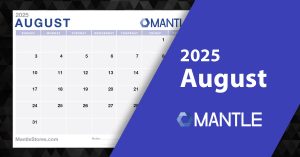The holiday season is upon us, and as retail owners, we face a crucial decision: when should we launch our Christmas discounts, if any at all? This decision can have a significant impact on our business, especially considering the variability in inventory levels and customer preferences. In this article, we will delve into the nuances of discount timing and hopefully provide valuable insights and guidance to help business owners navigate this pivotal choice successfully.
Assessing Your Inventory Levels: A Balancing Act
Inventory levels vary widely among game stores, so the first step in determining your discount strategy is assessing your current stock situation. If your store is currently heavy on inventory, with shelves brimming with games waiting to find new homes, it may be time to consider starting discounts before Christmas. By doing so, you can lower your inventory to those early holiday shoppers who are looking to get a jump start on their gift buying. This reduces your carrying costs and frees up space for new products in the upcoming year.
Conversely, if you find your store light on inventory, with stocks running low in anticipation of the holiday rush, you might lean towards delaying discounts until later in the season or at all. This approach ensures that you have enough stock to meet the demands of holiday shopping, preventing potential customer dissatisfaction due to out-of-stock items or only having an expansion to a popular game. Balancing your inventory with your decision to discount is essential to making the most of your holiday sales. Most stores generally use discounting as a means to reduce inventory.
Making Sense of Your Data
Your store’s historical data holds the key to making informed decisions about the timing of your discounts. Here are a few tips on how to read and leverage your data effectively:
Start by examining your sell-through rates, which tell you how quickly products move off your shelves. This is also known as a turn rate. This will help you gauge the demand for your inventory and can guide your inventory management decisions.
Next, dive into your holiday sales history. Look at past holiday seasons to identify trends and understand customer behavior during this crucial period. Are there specific products that tend to perform exceptionally well during the holiday season? Understanding these patterns can help you determine when to introduce discounts. Also look at the inventory you have brought in specifically for the holiday season. A product like Lampoons Christmas Vacation Monopoly [https://amzn.to/48bTsoO] you may only carry during Christmas. You’ll want to have your inventory at or as close to zero as December 25th approaches.
Additionally, use year-over-year comparisons to gain insights into the growth or decline in your holiday sales. Are your holiday sales figures constantly improving, or are there noticeable fluctuations? These comparisons provide context for your discount strategy and help you set realistic expectations. Another great piece of information on year-over-year sales data is weather and local marketing. Was there a snow day? Was it the great annual Christmas Market in your town? Anything that could drive or take away traffic from your store is noteworthy and useful in determining current and future sales.
Integrating Discounts into Your Business Plan
As business owners, we must consider whether discounts should be a part of our regular business strategy. While it might seem tempting to only offer discounts during the holiday season, there are compelling reasons to consider more frequent promotions throughout the year.
Regular discounts can attract price-conscious customers and drive sales throughout the year, not just during the holiday season. By using discounts in your long-term business plan, you create an ongoing incentive for customers to return to your store, looking for a deal.
Effective integration of discounts requires a thoughtful approach. Consider which products or categories are best suited for discounts, discontinuation, or planned promotions strategically. For example, offering discounts on older or overstocked items can help clear your inventory while maintaining healthy profit margins on newer releases. Looking at your historical data and your turn rates will help guide your decisions. Integrating discounts seamlessly into your business model ensures that you reap the benefits of discounted promotions without compromising your overall profitability or damaging your brand image.
Inventory that isn’t moving is dead, dead inventory needs to be removed from your store to help free up space for merchandise that will sell.
You can’t pay the bills with dead inventory.
Understanding Customer Preferences
While it may be tempting to directly ask customers if they want discounts (let’s face it, who doesn’t love a good deal?), it’s more beneficial to gather insights into their shopping preferences and align that with your discount strategy.
Start by understanding when your customers prefer to do their holiday shopping. Do they tend to shop early, looking to secure their gifts ahead of time, or are they last-minute shoppers who appreciate late-season discounts? Surveying your customer base and analyzing past sales data can provide insights into these preferences.
Additionally, explore the types of promotions that resonate most with your audience. Are your customers more inclined to respond to percentage discounts, buy-one-get-one (BOGO) offers, or bundled deals? Tailoring your discount strategy to align with your customers’ preferences increases the likelihood of success and customer satisfaction. If you know you want to try and discount or clearance out an item but are unsure how, try an A/B test. Some customers get a percentage discount while others are offered a BOGO discount. Look at the data from that, which moved more items more quickly? What was the most profitable? What had the least loss of Cost of Goods Sold (COGS)? These can be expected especially on a dead inventory item.
By taking these steps to understand and cater to your customer’s preferences, you can create a discount strategy that not only drives sales but also strengthens customer relationships and brand loyalty. Ultimately, a well-informed approach to discount timing can enhance your store’s appeal during the holiday season and throughout the year.
Navigating Your Store’s Discounting History
If your game store has historically offered discounts less frequently or sparingly, it’s crucial to approach the introduction of discounts thoughtfully and effectively. Here are some strategies to consider:
Targeted Advertising: Use advertising to inform your customers about your upcoming holiday discounts. Craft compelling marketing messages that highlight the value they’ll receive by shopping at your store during this special time of year. Leverage social media, online advertising, and even traditional marketing channels to spread the word about your holiday deals.
Email Marketing: Your email list is a valuable asset. Utilize it to communicate directly with your customer base and offer exclusive discounts and promotions. Create a sense of anticipation by sending out teaser emails, countdowns to discount launches, and reminders as the holiday season approaches. Email marketing can be a powerful tool for stores less accustomed to discounting.
By implementing these advertising and marketing techniques you can effectively introduce discounts to your customer base whether they are familiar with such promotions or not. The key is to create excitement and demonstrate the value of shopping at your store during the holiday season. You should already be employing most of these marketing efforts in your strategies.
As far as wording for a discount marketing plan, something along the lines of, “This is rare! Semi-Annual Sale!” Let customers know that you only do this at most a handful of times of the year, and keep it as a special event. Special events allow you to create marketable days and create an event out of ‘thin air’. Today is special because it’s a Tuesday! But a Tuesday with a discount!
The Case for Periodic Sales
For game stores less accustomed to offering discounts, consider the benefits of introducing periodic sales events, including a special Christmas discount. These events can serve as a valuable addition to your business strategy for several reasons:
Attracting New Customers: Sales events can draw in new customers who may not have previously considered shopping at your store. They act as a compelling incentive for people to visit your store and explore your products. This influx of new customers can lead to increased visibility and long-term growth. Using social media paid advertising can help with this. Using the tools to geo-target a specific base around you and looking for customers that you may not already have will help draw new customers in. A marketing message along the lines of, “Hey! Got a kid that loves games? Visit us at FLGS for the newest hottest games! PS We are offering a discount”
Clearing Surplus Inventory: If you find yourself with excess inventory or older stock that needs to be moved, sales events provide an effective means to clear your shelves and free up valuable space for new product lines. This not only helps with inventory management but also ensures that your store remains dynamic and appealing to customers.
To successfully use periodic sales in your business plan, plan these events strategically. Consider the timing, the types of products you’ll discount, and how you’ll promote these sales to maximize their impact on your store’s profitability. If you are looking to discontinue an entire product line, look at a clearance or goodbye table. Start the discount at a lower percentage off and every week add to the discount until it’s all gone.
Tax Implications
One often overlooked aspect of discount timing is the tax implications related to inventory levels. As you make decisions about inventory and discounts, always consult with your accountant or financial advisor with questions about tax regulations.
Accountants can provide insights into how inventory levels may affect your tax liability. They can help you determine the optimal inventory levels for tax purposes, which may influence the timing of your discounts. For many businesses, having less inventory before the new year is the preferred option, as it can reduce associated tax obligations. However, to align your tax strategy with your overall business goals to strike the right balance, always seek professional help by asking your accountant.
Post-Christmas Rush
While most retailers focus on the lead-up to Christmas, it’s time to consider the potential for a post-Christmas buying rush in the gaming industry. Some customers may be looking to spend their gift cards or take advantage of post-holiday deals. Most stores have a healthy customer base of young adults to children, most of whom receive gift cards and cash as part of their holiday gifts.
To tap into this market, maintain inventory for post-holiday sales. If you opt for early discounts, be mindful not to sell off all of your stock completely. Instead, plan to have a reasonable amount of inventory available after Christmas to cater to post-holiday shoppers. This can extend the holiday shopping season and capture additional sales for you to start the new year strong.
Knowing Your Customers
Ultimately, your game store’s success hinges on knowing your customers inside and out. Understanding how strategically timed discounts can influence customer loyalty and encourage repeat business is paramount to your success as a business.
By providing discounts at times when your customers are most likely to appreciate them, you not only boost sales but also create a positive shopping experience that fosters customer loyalty. Whether you choose to offer early or late discounts, the goal is to align your discount strategy with your customer’s preferences and buying behavior.
Conduct surveys, engage with your customers through social media, and pay attention to their feedback. This ongoing dialogue will provide valuable insights into how your discounting practices are perceived and whether they contribute to building a loyal customer base.
In conclusion, the timing of your Christmas discounts as a game store owner can be a tough decision that should be based on a combination of factors, including inventory levels, customer preferences, and your long-term business strategy. By carefully considering these factors and using data-driven insights, you can make informed choices that boost your holiday sales and contribute to the ongoing success of your game store. Remember that no two stores are the same, so tailor your approach to what works best for your unique business.









